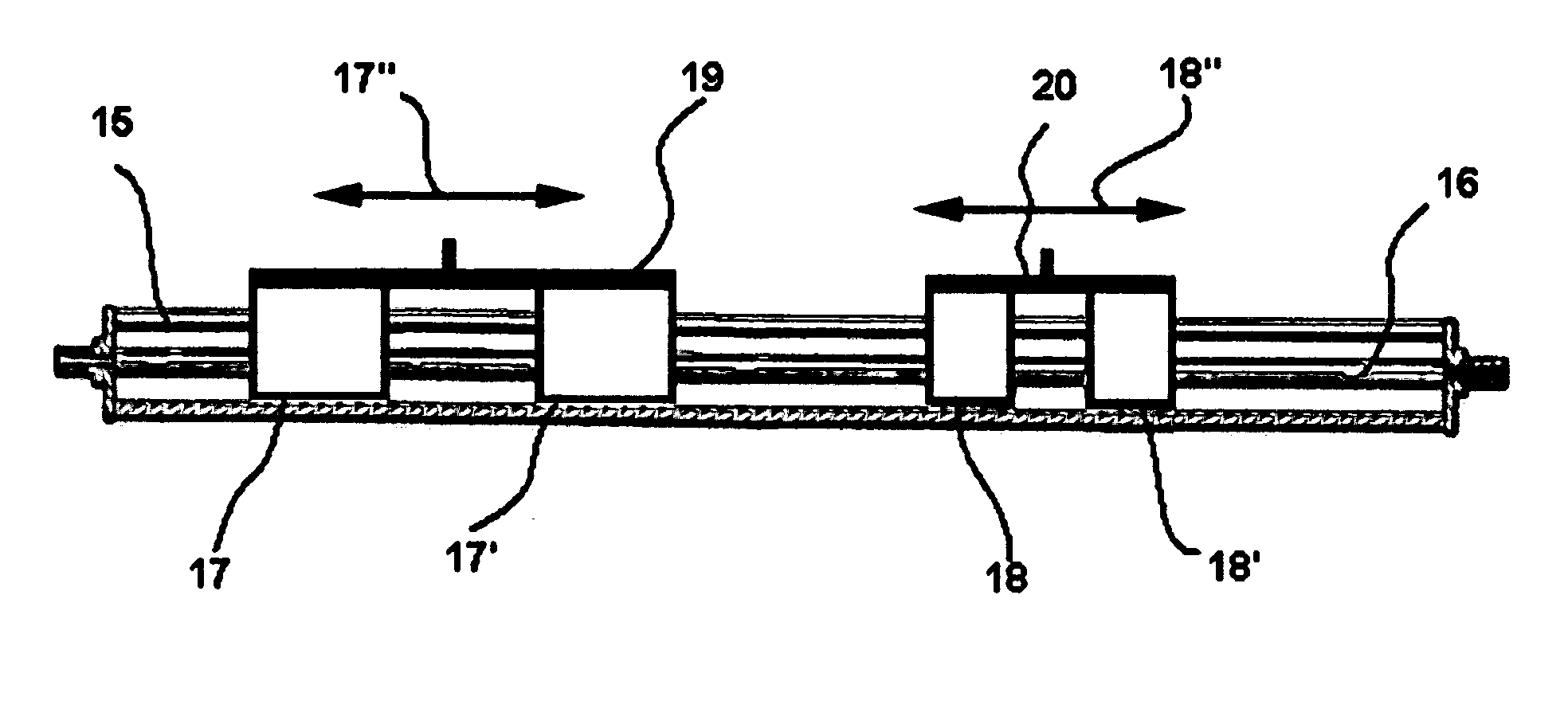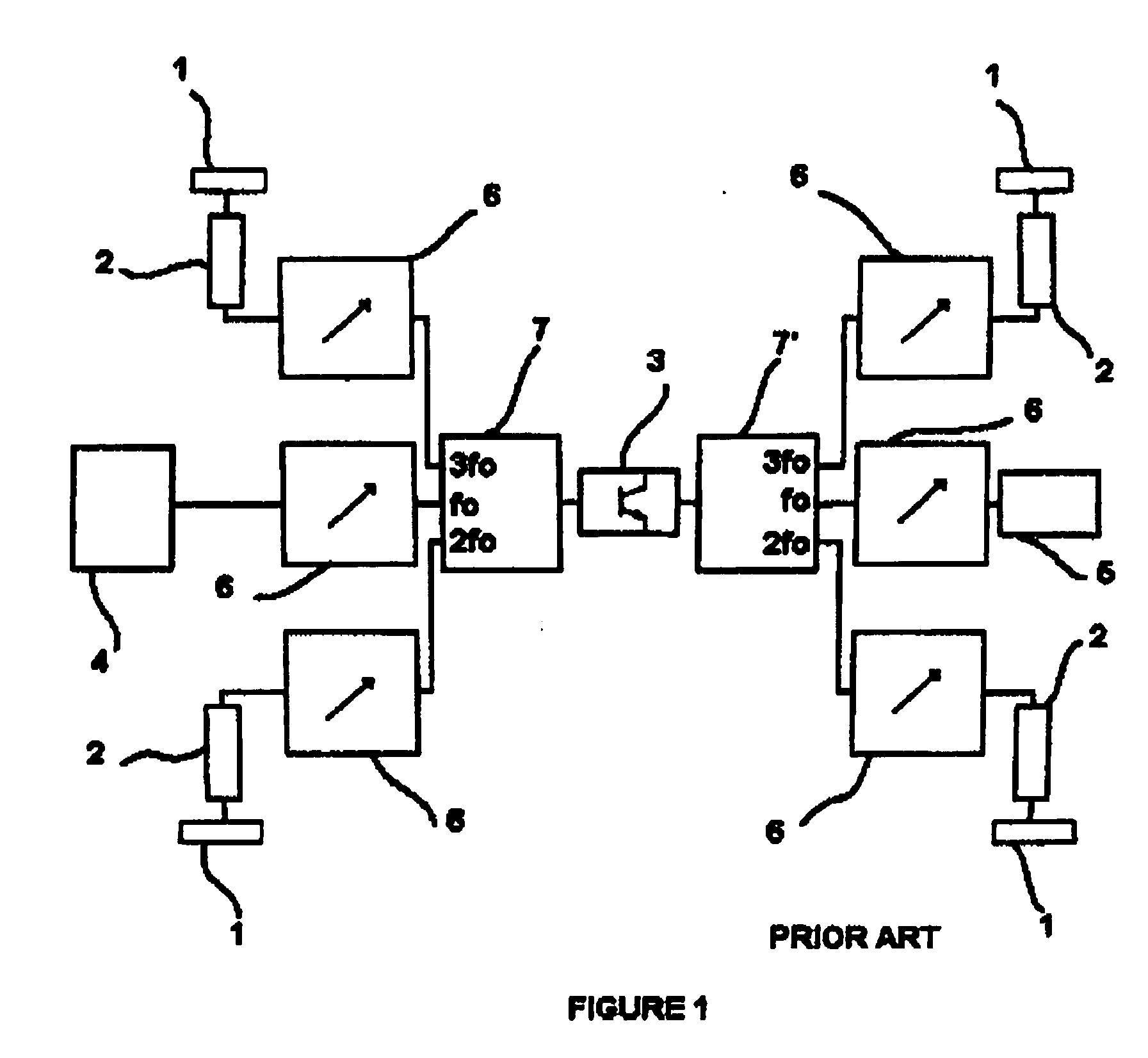Harmonic reflective load-pull tuner
a tuner and harmonic reflection technology, applied in the field of harmonic reflective tuner system, can solve the problems of loss of triplexer, reduced performance, and reduced band rejection, so as to achieve the effect of easy manufacturing and good isolation of fundamental tuning from harmonic tuning
- Summary
- Abstract
- Description
- Claims
- Application Information
AI Technical Summary
Benefits of technology
Problems solved by technology
Method used
Image
Examples
Embodiment Construction
[0041] The measurement setup for the harmonic tuner of this invention is described by FIG. 5. The harmonic load-pull setup is composed of an input generator and its associated amplification (4) connected in series to the input wide band tuner (6), input diplexer (13), DUT (3), output diplexer (13′), output wide band tuner (6′) and the appropriated measurement apparatus (5), such as spectrum analyser, power meter or standard load. The harmonic tuners of this invention are placed in parallel with the DUT's input and output, the input harmonic tuner (14) being connected to the input diplexer (13), and the output harmonic tuner (14′) being connected to the output diplexer (13′). The diplexers have one input and two outputs, discriminating the fundamental frequency F0 on one branch, from the frequencies above F0 (harmonics of F0) on the other branch where the harmonic tuners are connected.
[0042] The harmonic reflective tuner, described by FIG. 8, consists of a housing (41), a slab-line ...
PUM
 Login to View More
Login to View More Abstract
Description
Claims
Application Information
 Login to View More
Login to View More - R&D
- Intellectual Property
- Life Sciences
- Materials
- Tech Scout
- Unparalleled Data Quality
- Higher Quality Content
- 60% Fewer Hallucinations
Browse by: Latest US Patents, China's latest patents, Technical Efficacy Thesaurus, Application Domain, Technology Topic, Popular Technical Reports.
© 2025 PatSnap. All rights reserved.Legal|Privacy policy|Modern Slavery Act Transparency Statement|Sitemap|About US| Contact US: help@patsnap.com



